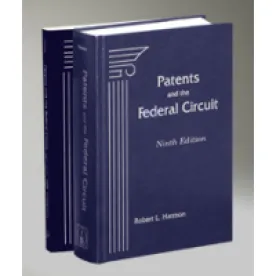In what it described as an “unusual situation” involving design patents, the US Court of Appeals for the Federal Circuit reversed a Patent Trial and Appeal Board (PTAB) factual determination, finding that the PTAB erroneously excluded a prior art reference as a proper primary reference when the reference created “basically the same” visual design impressions. Campbell Soup Co. et al. v. Gamon Plus Inc., Case Nos. 18-2029, -2030 (Fed. Cir. Sept. 26, 2019) (Moore, J) (Newman, J, dissenting).
Gamon owns two design patents directed to a gravity feed can dispenser rack. After being sued for patent infringement by Gamon, Campbell Soup and Trinity Manufacturing petitioned for inter partes review of Gamon’s design patents on the grounds that the claims were obvious in view of two prior art references, Linz and Samways.
In its 2012 decision in Apple v. Samsung, in the context of design patents, the Federal Circuit defined a primary reference as a single reference that creates “basically the same” visual impression as the claimed design. If a primary reference exists, then secondary references may be used to modify the primary reference to create a design that has the same overall visual appearance as the claimed design. The PTAB applied the “basically the same” test to the prior art references submitted by Campbell Soup, finding that neither Linz nor Samways was a proper primary reference since neither disclosed a design similar enough to the Gamon’s design. Specifically, the PTAB stated that that it would require adding a hypothetical can to Linz’s design before comparing it to Gamon’s claimed design, which is improper under the design “in existence” test. Similarly, the PTAB found that Samways could not serve as a primary reference because it would require significant modifications in its shape and dimensions and removal of parts to create a design that was “basically the same” as the Gamon design. Accordingly, the PTAB found that Gamon’s patent was not obvious. Campbell Soup appealed.
The Federal Circuit affirmed the PTAB’s decision that Samways could not serve as a primary reference because of its substantial difference from Gamon’s design. However, in what it described as an “unusual situation,” the Court disagreed with the PTAB with respect to Linz and vacated the PTAB’s factual determination that Linz was not a proper primary reference. The Court noted that the parties did not dispute that the claimed designs of the Gamon patents and the Linz design were both made to hold a cylindrical object in the display area. Rather, the dispute centered on “the dimensions of a can that would be used in Linz in comparison with that in the claimed designs.” The Court dismissed this as “ever-so-slight differences” in design in light of the overall similarities between the Linz and Gamon designs. Thus, the Court found that the PTAB’s conclusion that Linz was not a proper primary reference was not supported by substantial evidence, and remanded the case for further proceedings.
Judge Newman dissented, arguing that the PTAB correctly applied the law of design patents in determining that Linz could not serve as a primary reference. According to Judge Newman, the majority erred in modifying the Linz design with a judicial insertion of the missing can to create a design more similar to the Gamon design for determination of obviousness.



 />i
/>i
